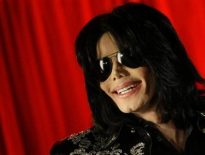(Reuters) – In Indonesia’s capital Jakarta, a buzzer is not an alarm or a bell, but someone with a Twitter account and more than 2,000 followers who is paid to tweet.

Jakarta is the world’s tweet capital and advertisers eager to reach the under-30 crowd are paying popular Twitter users to spread their word through social media, starting at about $21 per tweet.
While celebrity endorsements via Twitter are common worldwide, Indonesia is unusual because advertisers are paying the Average Joes too.
These Twitter “buzzers” send short messages promoting brands or products to their followers, usually during rush hour, 7 to 10 a.m. and 4 to 8 p.m., when Jakarta’s notorious traffic jams create a captive audience with time to scan their mobile phones.
Jakarta has more Twitter users than any other city In the world, according to Semiocast, a social media market researcher, and Indonesia is home to the world’s fourth-largest population, with half the people under 30. All ingredients for a social media marketer’s dream.
“Indonesians love to chat. We love to share. We are community driven as a culture. For us it’s very easy to adopt social media because it is a channel through which we can express our opinions,” said Nanda Ivens, chief operating officer at XM Gravity Indonesia, a digital marketing unit of London-listed advertising giant WPP Group.
For advertisers, using Twitter buzzers is a way to personalize the pitch, connecting someone who may have a special interest in a product with like-minded potential customers. A local photography buff, for example, would be a good target for a camera company.
An effective social media campaign will generate real conversations and genuine endorsements, said Thomas Crampton, Hong Kong-based social media director at advertising firm Ogilvy. But one issue with paid buzzers is that they may be seen as endorsing something only for the money.
“It’s not going to be transparent to the people reading the Twitter feed whether they’re being paid, and that’s not very honest,” said Crampton.
“The followers will see that this guy is for sale. It’s really like talking to a friend. If your friend is being paid to tell you something then a) you wouldn’t consider that person your friend and b) you’re not going to believe them.”
MEASURING SUCCESS
PT Nestle Indonesia, a unit of global food company Nestle SA, counts teenage pop singer Raisa (@raisa6690) and heartthrob actor Nicholas Saputra (@nicsap) among its brand ambassadors. They recently tweeted their experiences at a large Sumatra coffee plantation in a campaign supported by hired buzzers who were retweeting the celebrities’ comments and other sponsored messages from the company.
The challenge is measuring success.
“We do have quantitative measurement, which is the number of followers, the number of likes and the number of clicks,” said Patrick Stillhart, head of the coffee business at PT Nestle Indonesia. “But how do we relate that to brands and sales? There’s left a question mark.”
Stillhart said the company uses social media for more than a dozen brands and about 15 percent of its advertising spending goes to digital media. Apart from Nestle, competitor Unilever Indonesia also followed similar path for their products.
Sometimes things go wrong.
Prabowo (@bowdat), 33, who quit his day job two years ago to scout for buzzers, recalled one cautionary tale about tweets meant to promote an Android product that were sent through a rival BlackBerry or iPhone device. Followers could see the gaffe because tweets often include an automatic tag indicating how the message was posted.
Stand-up comedian Ernest Prakasa (@ernestprakasa) fell afoul of the “twitterverse” last year while promoting the Mini Cooper, a popular car made by BMW Group
“There was a viral video. The idea was, I had to pretend to be locked in a container for several hours and then I escaped with the car. I was asked to act as if I was captured,” said the 30-year-old, who charges advertisers 7 million rupiah ($670) for 10 tweets.
Some of his friends didn’t realize it was an act, and began retweeting he had been kidnapped. They were furious when told it was an advertising gimmick.
“I was cursed at, accused of only trying to create a sensation. I had around 15,000 followers so I didn’t think it could become big. But I also learned that whenever this sort of fiasco happens, stay silent. It won’t last more than two days. Something new will come along and people will forget anyway.”
($1 = 10,490 Indonesian rupiah)
(Additional reporting by Jeremy Wagstaff, Editing by Jonathan Thatcher and Raju Gopalakhrisnan)





